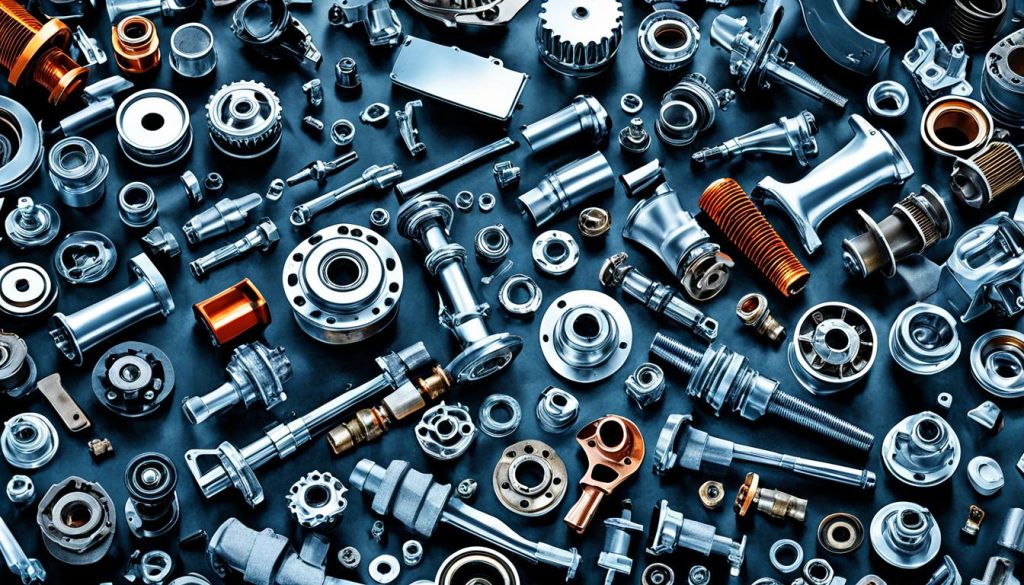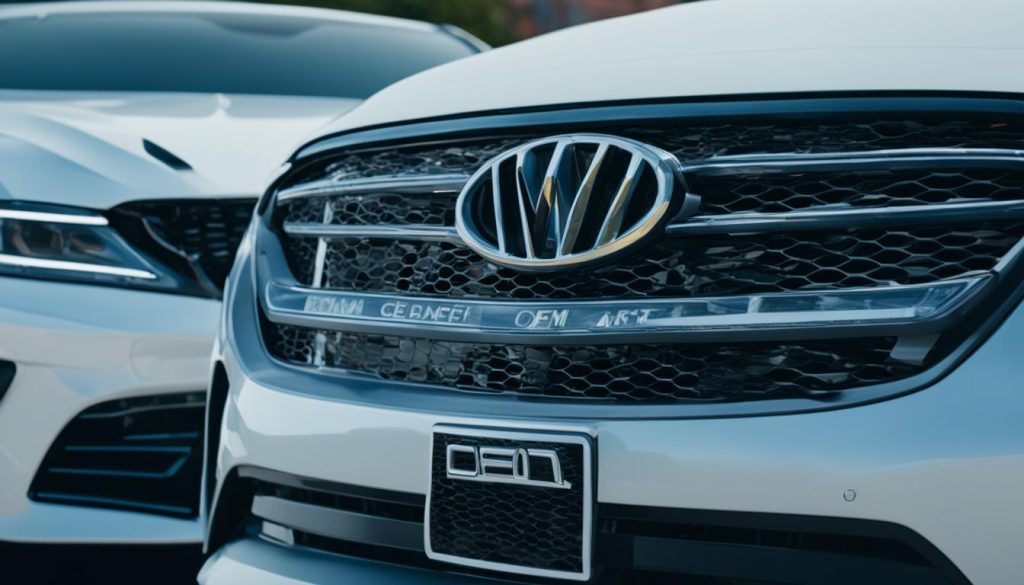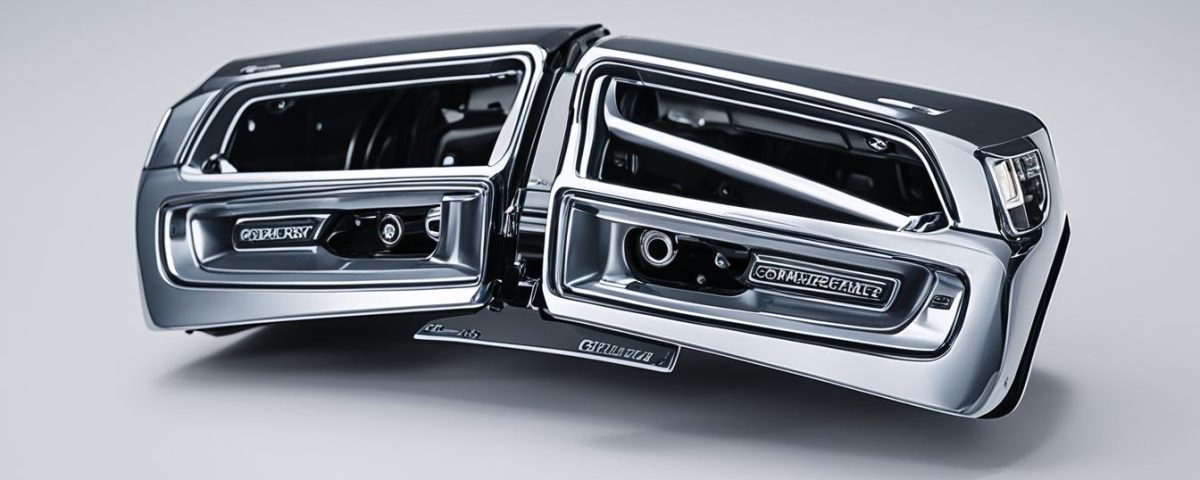
How Long Does Collision Repair Take? Understanding Repair Timeframes

Seasonal Vehicle Maintenance Tips to Prevent Collision Damage
Choosing between original equipment manufacturer (OEM) and aftermarket car parts is all about balancing your priorities with your budget. Each option has its own benefits, but the lifespan and initial cost can vary widely. This article will compare the pros and cons of OEM and aftermarket parts to help you determine the best option for your vehicle repair needs. We’ll also discuss factors to consider when choosing between the two, such as compatibility, quality assurance, warranty coverage, and cost implications. By the end, you’ll be able to make an informed decision on whether OEM or aftermarket parts are the right fit for your vehicle repair project.
Key Takeaways
- OEM parts are manufactured by the original vehicle manufacturer, while aftermarket parts are produced by third-party companies.
- OEM parts are generally more expensive but offer better quality and compatibility assurance, while aftermarket parts are typically more cost-effective.
- Factors to consider when choosing between OEM and aftermarket parts include compatibility, quality, warranty coverage, and long-term cost savings.
- Consulting with a professional mechanic can help you determine the best option for your specific vehicle repair needs.
- Balancing your budget and performance needs is key when deciding between OEM and aftermarket replacement parts.
Understanding the Differences
When it comes to vehicle repair and maintenance, the choice between OEM parts and aftermarket parts can have a significant impact on the performance, reliability, and longevity of your car. Understanding the key differences between these two types of parts is crucial to making an informed decision that best suits your needs.
What are OEM Parts?
OEM, or Original Equipment Manufacturer, parts are those that are produced by the same company that manufactured the original parts installed in your vehicle. These parts are designed to seamlessly integrate with your car’s systems and are guaranteed to fit and function as intended by the manufacturer. OEM parts often come with a manufacturer’s warranty and are known for their exceptional quality and reliability.
What are Aftermarket Parts?
Aftermarket parts, on the other hand, are produced by third-party manufacturers who did not make the original equipment. While these parts can often be used as replacements, they may not be fully compatible with your vehicle’s specific make and model. Aftermarket parts can vary in quality and may not offer the same level of warranty coverage as OEM parts.
Understanding the differences between OEM parts and aftermarket parts is crucial when it comes to ensuring the proper fit, function, and longevity of your vehicle’s components. By making an informed decision, you can protect the integrity of your car and maintain its optimal performance.
Compatibility and Quality Assurance
When it comes to vehicle repairs, the choice between OEM (Original Equipment Manufacturer) and aftermarket parts is a crucial decision that can significantly impact the performance, safety, and longevity of your car. One of the key factors to consider is the level of part compatibility and quality assurance.
OEM parts are designed and manufactured to seamlessly integrate with your vehicle’s systems, ensuring a perfect fit and proper function. These parts meet the highest standards set by the original manufacturer, providing a guaranteed level of compatibility and quality assurance. Aftermarket parts, on the other hand, may not always meet the same rigorous standards, leading to potential compatibility issues and potential problems down the road.
To ensure the best possible outcome for your vehicle repair, it’s essential to carefully evaluate the importance of part compatibility and quality assurance for your specific needs. While aftermarket parts may sometimes be more cost-effective, the potential trade-offs in terms of fit and function should be thoroughly considered.
- OEM parts are designed to provide a perfect fit and proper function for your vehicle.
- Aftermarket parts may not always meet the same quality assurance standards as OEM parts.
- Compatibility and fit and function are crucial factors when choosing parts for your vehicle repair.
By prioritizing part compatibility and quality assurance, you can have peace of mind knowing that your vehicle is restored to its optimal performance and safety standards. This investment can ultimately save you time, money, and potential headaches down the road.
OEM vs Aftermarket Parts: The Pros and Cons
When it comes to vehicle repairs, the choice between original equipment manufacturer (OEM) parts and aftermarket parts is a critical decision. Both options have their own set of advantages and drawbacks, and it’s essential to understand the key differences to make an informed choice.
Advantages of OEM Parts
OEM parts are designed and manufactured by the same company that produced your vehicle, ensuring a guaranteed fit and optimal performance. These parts often come with a manufacturer-backed warranty, providing peace of mind and reliability. Additionally, OEM parts are known for their durability and long lifespan, making them a reliable choice for critical components.
Drawbacks of OEM Parts
The primary drawback of OEM parts is their higher cost. These parts are typically more expensive than their aftermarket counterparts, which can be a significant consideration, especially for budget-conscious consumers. Moreover, the availability of OEM parts may be limited, as they are often only available through authorized dealerships or specialized repair shops.
It’s important to weigh the pros and cons of OEM and aftermarket parts to determine the best solution for your vehicle’s needs and your budget. By understanding the key differences, you can make an informed decision that balances cost, warranty, and reliability to ensure your vehicle receives the right parts for the job.
OEM vs Aftermarket Parts: The Pros and Cons
Benefits of Aftermarket Parts
When it comes to vehicle repairs, aftermarket parts can offer some distinct advantages. One of the primary benefits is the potential for cost savings. Aftermarket parts are often more affordable than their OEM counterparts, making them an attractive option for those on a tight budget. Additionally, the performance of aftermarket parts can sometimes exceed that of OEM parts, providing an opportunity for vehicle customization and enhancement.
Another key advantage of aftermarket parts is the wide range of options available. Drivers can often find specialized or unique aftermarket parts that cater to their specific needs or preferences, allowing for a more personalized driving experience. This flexibility can be particularly appealing for those looking to customize their vehicles or explore alternative performance upgrades.
Disadvantages of Aftermarket Parts
While aftermarket parts offer benefits, there are also some potential drawbacks to consider. One of the primary concerns is the consistency in quality. Unlike OEM parts, which are manufactured to strict standards, the quality of aftermarket parts can vary widely. This can lead to issues with reliability, durability, and even safety, particularly if the aftermarket part is not sourced from a reputable supplier.
Another potential downside of aftermarket parts is the warranty coverage. OEM parts typically come with a manufacturer’s warranty, providing peace of mind and protection in the event of a defect or failure. Aftermarket parts, on the other hand, may have limited or inconsistent warranty coverage, which can increase the risk and cost of future repairs.

Ultimately, the decision between OEM and aftermarket parts depends on the individual’s priorities, budget, and specific vehicle needs. While aftermarket parts can offer cost savings and customization opportunities, it’s crucial to carefully research and select reputable aftermarket brands to ensure reliable performance and avoid potential issues.
Factors to Consider When Choosing Parts
When selecting between OEM (Original Equipment Manufacturer) and aftermarket parts for your vehicle repair, there are several key factors to consider. These include your vehicle’s warranty coverage, your repair budget, the availability of parts, and your performance needs.
If your vehicle is still under a manufacturer’s warranty, using OEM parts may be the safest option to avoid any potential issues that could affect the warranty. On the other hand, if cost is a primary concern, aftermarket parts often provide significant savings compared to their OEM counterparts.
Another important factor is part availability. Some OEM parts may be harder to find or have longer lead times, while aftermarket options may be more readily accessible. This can be a crucial consideration, especially for urgent repairs.
- Carefully examine your vehicle’s warranty coverage to understand the implications of using OEM or aftermarket parts.
- Evaluate your repair budget and the cost difference between OEM and aftermarket parts to find the most suitable option.
- Assess the availability of the required parts from both OEM and aftermarket sources to ensure timely completion of the repair.
- If you have specific performance needs, such as improved acceleration or handling, aftermarket parts may offer more customization options.
Ultimately, weighing these factors will help you determine the best choice for your vehicle repair needs, whether that means opting for OEM parts or exploring the benefits of aftermarket alternatives.
Warranty and Cost Implications
When it comes to vehicle repairs, the warranty coverage for OEM and aftermarket parts can have a significant impact on the overall cost implications. Understanding these differences is crucial in deciding which parts to use for your repair.
Warranty Coverage
OEM (Original Equipment Manufacturer) parts typically come with a manufacturer-backed warranty, providing peace of mind and protection against defects. This warranty coverage can offer extended protection, ensuring that any issues or failures are addressed without additional costs to you.
On the other hand, aftermarket parts may have limited or even no warranty coverage at all. This means that you, as the vehicle owner, could potentially be responsible for any expenses related to potential problems or failures with these parts. This can lead to unexpected costs and can undermine the savings you may have initially realized by choosing aftermarket parts over OEM options.
- OEM parts often come with a manufacturer-backed warranty coverage for added peace of mind.
- Aftermarket parts may have limited or no warranty, potentially leading to cost implications down the line.
- Carefully considering the OEM warranty and aftermarket warranty options is crucial when choosing parts for your vehicle repair.

By understanding the warranty implications of OEM and aftermarket parts, you can make an informed decision that aligns with your budget and provides the best long-term value for your vehicle repair needs.
Where to Source OEM and Aftermarket Parts
When it comes to vehicle repairs, the availability and source of Original Equipment Manufacturer (OEM) and aftermarket parts can vary depending on the repair shop you visit. Understanding where to find these parts can help you make the best decision for your repair needs.
Dealership repair shops typically have direct access to OEM parts, ensuring a seamless replacement process for your vehicle. These parts are manufactured by the same company that produced your car, offering a perfect fit and guaranteed compatibility. On the other hand, independent mechanics and auto body shops may offer a choice between OEM and aftermarket options, providing more flexibility in sourcing parts.
If your repair is part of an insurance claim, the insurer may prefer the use of aftermarket parts to save money. However, you’ll usually have the option to pay the difference if you prefer to use OEM parts for their quality and reliability.
By knowing where to purchase the parts you need, you can make an informed decision that best suits your vehicle, budget, and personal preferences. Whether you choose to source parts from a dealership, independent mechanic, or auto body shop, understanding the availability and options can help ensure a successful and cost-effective repair.
- Dealerships typically have direct access to OEM parts
- Independent mechanics and auto body shops may offer both OEM and aftermarket options
- Insurance claims may prefer aftermarket parts, but you can often pay the difference for OEM
- Knowing where to source parts can help you make the best decision for your vehicle repair
Conclusion
In the end, the decision between OEM and aftermarket parts for your vehicle repair depends on balancing your priorities, budget, and specific requirements. OEM parts offer the assurance of a guaranteed fit, extended lifespan, and manufacturer-backed warranties, while aftermarket parts can provide cost savings and potential performance enhancements.
By understanding the differences, weighing the pros and cons, and considering the key factors, we can make an informed decision that best suits our vehicle repair needs. Miracle Body and Paint is here to guide you through this decision-making process and ensure your vehicle is repaired with the right parts for your requirements.
Whether you opt for OEM or aftermarket parts, the goal is to find the solution that balances quality, cost, and the unique needs of your vehicle. By making an informed choice, we can maintain the integrity of our vehicles, extend their lifespan, and enjoy a hassle-free driving experience.



